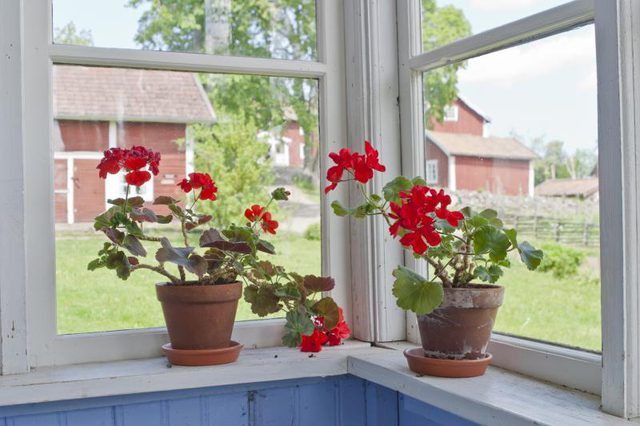Bulbs
Flower Basics
Flower Beds & Specialty Gardens
Flower Garden
Garden Furniture
Garden Gnomes
Garden Seeds
Garden Sheds
Garden Statues
Garden Tools & Supplies
Gardening Basics
Green & Organic
Groundcovers & Vines
Growing Annuals
Growing Basil
Growing Beans
Growing Berries
Growing Blueberries
Growing Cactus
Growing Corn
Growing Cotton
Growing Edibles
Growing Flowers
Growing Garlic
Growing Grapes
Growing Grass
Growing Herbs
Growing Jasmine
Growing Mint
Growing Mushrooms
Orchids
Growing Peanuts
Growing Perennials
Growing Plants
Growing Rosemary
Growing Roses
Growing Strawberries
Growing Sunflowers
Growing Thyme
Growing Tomatoes
Growing Tulips
Growing Vegetables
Herb Basics
Herb Garden
Indoor Growing
Landscaping Basics
Landscaping Patios
Landscaping Plants
Landscaping Shrubs
Landscaping Trees
Landscaping Walks & Pathways
Lawn Basics
Lawn Maintenance
Lawn Mowers
Lawn Ornaments
Lawn Planting
Lawn Tools
Outdoor Growing
Overall Landscape Planning
Pests, Weeds & Problems
Plant Basics
Rock Garden
Rose Garden
Shrubs
Soil
Specialty Gardens
Trees
Vegetable Garden
Yard Maintenance
How to Care for Geraniums Indoors
How to Care for Geraniums Indoors. Geraniums (Pelargonium spp.) make cheery houseplants when kept indoors from autumn through spring -- or even all year. The most common varieties are the zonal hybrids (Pelargonium x hortorum), featuring rings on their foliage and perennial in U.S. Department of Agriculture plant hardiness zones 10 through 11. Also...

Geraniums (Pelargonium spp.) make cheery houseplants when kept indoors from autumn through spring -- or even all year. The most common varieties are the zonal hybrids (Pelargonium x hortorum), featuring rings on their foliage and perennial in U.S. Department of Agriculture plant hardiness zones 10 through 11. Also popular are the ruffled flowers of regal hybrids (Pelargonium x domesticum) and the dangling vines of ivy hybrids (Pelargonium x peltatum) -- both hardy in USDA zones 9 through 11 -- as well as the delectable fragrances of scented geranium species (Pelargonium spp.), whose hardiness varies from USDA zones 9 through 11.
Pruning and Protection
When you bring zonal, ivy or scented geraniums indoors in autumn, cut the plants' stems back to 4 inches. Clean the blades of your pruning shears with rubbing alcohol first to avoid spreading disease from previous plants.
Regal geraniums should be left outdoors for as long as possible, since they require short days and at least 6 weeks of nighttime temperatures below 55 degrees Fahrenheit to set buds, which generally bloom in late winter or early spring. Bring the plants indoors before your first autumn frost, but donít prune them then, or you will eliminate the buds. Cut regal geraniums back in early summer instead.
Plants kept indoors full time should be pruned in spring, as that is the season when they will recover the most quickly. Cut back half the stems by two-thirds and the remaining stems by about one-third, being sure to leave some foliage on the latter ones. Snip off faded flowers also, to keep the plants blooming.
Light and Location
Most geraniums need as much sunlight as possible, and should be positioned on a south-facing windowsill. If that location doesnít provide them at least 4 hours of sunlight per day, place them under a fluorescent grow-light for 16 hours per day instead. Again, the exceptions are the regal geraniums, which prefer partial sunlight, can thrive on east- or west-facing windowsills, and should receive only 12 hours of illumination per day if under a grow-light.
If they are to bloom in early summer, scented geraniums must experience a chilly winter with temperatures between 45 and 55 degrees Fahrenheit, perhaps in an unheated sun porch or cool greenhouse. Those plants are most often grown for their sweet-smelling foliage, however, so you can ignore this requirement if you donít mind their lack of bloom.
Other geraniums like to be kept on the cool side during fall and winter and would prefer nighttime temperatures in the 50s. However, they will tolerate more normal household temperatures between 60 and 75 degrees F.
Drink and Diet
If you tend to overwater your houseplants, grow geraniums in clay pots which dry out quickly, as the plants are prone to root rot under soggy conditions. To prevent fungus problems, always water them in the morning, try to avoid getting their foliage wet and wait until the soil is dry to 1 inch below the surface -- 1/2 inch for regal and scented geraniums -- before you water them again. If the plants develop corky -- dry and brown -- spots on their leaves, they probably are receiving too much moisture.
Regal geraniums should be fertilized once every two weeks from August through May with a bloom booster type plant food such as 15-30-15. Dissolve 1/2 teaspoon of the crystals in 1 gallon of water or use whatever amount is indicated on the package. Refrain from feeding regal geraniums during June and July, which is their resting period. Fertilize other geraniums once every two weeks from March through October with a balanced plant food such as 20-20-20, mixing 1 teaspoon of that food into each 1 gallon of water.
Pesky Insects
Geraniums may be attacked by aphids, which resemble green lice clustered on the tips of the plants, or by whiteflies which usually lurk beneath the leaves. To remove aphids, tilt the plant over a dishpan and shoot the insects off with a strong stream of water from a spray bottle. For whiteflies, spray the plant thoroughly with an insecticidal soap once a week for three weeks, mixing about 4 teaspoons of the soap with 1 quart of water.
Relocation
If you wish to take your geraniums outdoors again in summer, cut them back to 4 inches with disinfected shears and re-pot them in fresh soil in a pot with drainage holes. Place them in a shady location first, after which you can gradually accustom them to more and more sunlight. Leave the regal types in partial shade after you have moved the others into full sun.